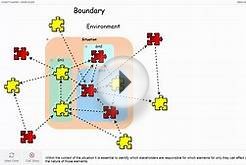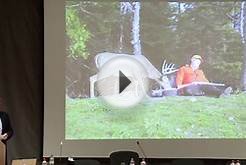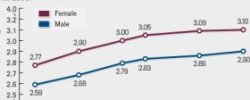 The Ministry of Education, Science and Culture is responsible for the implementation of legislation pertaining to all school levels from pre-primary and compulsory education through the upper secondary and higher education levels, as well as continuing and adult education. This includes the tasks of creating curriculum guides for pre-primary, compulsory and upper secondary schools, issuing regulations and planning educational reforms. The Minister of Education, Science and Culture grants accreditation to Higher Education Institutions that fulfil the criteria laid down in national legislation as well as internationally accepted criteria. The Quality Board for Icelandic higher education has issued a Quality Enhancement Framework (QEF) that includes elements on reviews at institutional and subject levels as well as continuing and additional accreditation of HEIs.
The Ministry of Education, Science and Culture is responsible for the implementation of legislation pertaining to all school levels from pre-primary and compulsory education through the upper secondary and higher education levels, as well as continuing and adult education. This includes the tasks of creating curriculum guides for pre-primary, compulsory and upper secondary schools, issuing regulations and planning educational reforms. The Minister of Education, Science and Culture grants accreditation to Higher Education Institutions that fulfil the criteria laid down in national legislation as well as internationally accepted criteria. The Quality Board for Icelandic higher education has issued a Quality Enhancement Framework (QEF) that includes elements on reviews at institutional and subject levels as well as continuing and additional accreditation of HEIs.
While pre-primary and compulsory education is the responsibility of municipalities, central government is responsible for the operation of upper secondary schools and higher education institutions. Although education in Iceland has traditionally been provided by the public sector, a certain number of private institutions are in operation today, primarily at the pre-primary, upper-secondary and higher education levels.
Pre-primary school education ( leikskóli)
Pre-primary education is defined by law as the first level of the educational system, providing education and care for children who have not reached six years of age, at which point compulsory education begins. The Pre-primary Schools Act No 90/2008.
Compulsory education ( grunnskóli)
Compulsory education is organised in a single structure system, i.e. primary and lower secondary education form part of the same school level, and generally take place in the same school. Legislation on compulsory education stipulates that education shall be mandatory for children and adolescents between the ages of six and sixteen. The Compulsory School Act No 91/2008.
Upper secondary education( framhaldsskóli)
Upper secondary education is not compulsory, but anyone who has completed compulsory education has the right to enter an upper secondary school. Students are usually between 16and 20 years of age. General academic education is primarily organised as a four-year course leading to a matriculation examination. The length of the courses in vocational education varies, lasting from one semester to ten, but most prevalent are four-year courses. The Upper Secondary School Act No 92/2008.
Higher educational system( háskólar)
The modern Icelandic system of higher education dates back to the foundation of the University of Iceland in 1911. The legal framework covering higher education in Iceland is the Higher Education Institutions Act No 63/2006. The act applies to institutions providing higher education leading to a degree and which have been accredited by the Ministry of Education, Science and Culture. The ministry has also issued the National Qualification Framework for Iceland No 80/2007, a systematic description of the structure of education and degrees awarded in higher education that is specifically based on learning outcomes. All accredited higher education institutes in Iceland must follow this framework.
The Minister of Education, Science and Culture grants accreditation to Higher Education Institutions that fulfil the criteria laid down in national legislation as well as internationally accepted criteria. The Quality Board for Icelandic Higher Education has issued a Quality Enhancement Framework (QEF) that includes elements on reviews at institutional and subject levels as well as continuing and additional accreditation of HEIs.
There are currently seven higher education institutions in Iceland that fall under the auspices of the Ministry of Education, Science and Culture and are governed by the Higher Education Acts No 63/2006.
The main purpose of this White Paper is to create a basis for discussion and action on education reform in Iceland. The intention is to call out to all those with a stake in education to contribute to further work in this field. In that regard, the long-term perspective is important given the complexity of education systems and the fact that the results of reform often take a long time to become evident, although short-term benefits may certainly also materialise in a limited number of fields.











